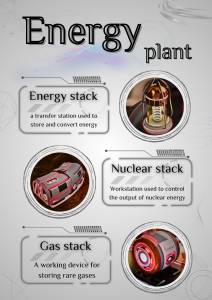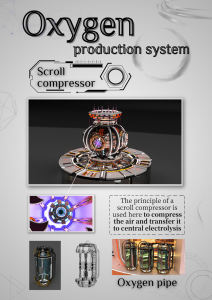Bionic Nautilus Mars base by MarsPioneer Domain
DET ER IKKE NOE Å SNAKKE OM. Zhengzhou City, Henan-provinsen-Henan-provinsen Kina 19 år gammel, 18 år gammel 5 / 2 engelsk Mars
Prosjektbeskrivelse
Mars, its thin atmosphere, primarily composed of carbon dioxide and devoid of liquid water, presents an inhospitable environment for Earthly life forms. Despite these harsh conditions, Mars exploration holds profound strategic significance.
Considering the higher elevation in Mars’s southern hemisphere and the presence of significant magnetic anomalies there, we have chosen Isis Basin in the northern hemisphere as the site for our camp. The basin boasts a low-lying, gently undulating terrain with relatively stable magnetic field variations. It is surrounded by areas rich in various exploitable resources.
Innovation Point One: The camp’s design incorporates a nautilus-inspired spiral structure, combining aesthetic appeal with practicality. Utilizing special materials, this structure effectively disperses Martian surface winds and withstands dust storms, ensuring stability and safety under extreme weather conditions.
Inside the camp, meticulous functional zoning has been implemented, including research areas, living quarters, recreational spaces, and a green agriculture zone.
Innovation point 2: In order to adapt to the severe temperature fluctuations on Mars, we have adopted collector wall technology. This method uses sunlight to heat dark, glass-covered thermal storage walls; The resulting air pressure difference draws air inside, providing heating.
Innovation point 3: In terms of energy supply, vortex compressors are installed to produce oxygen. The air passes through the filter before entering the vortex compressor, where one vortex is stationary while the other oscillates rhythmically. When air enters, the volume between the vortices decreases and the pressure increases. Once a certain threshold is reached, the high-pressure air moves on to the next stage; The compressed air then enters the cathode, where the CO2 breaks down into CO and oxygen ions. Oxygen ions pass through a solid electrolyte to the anode, where they oxidize to gaseous oxygen for collection.
In addition, vertical axis wind turbines were built near the crater rim. The wind speed at the edge of the crater increases significantly, creating fast-moving vortices that lift the sand grains and slightly increase the density of the air. This setup maximizes the capture of wind energy, converting it into electricity to meet the ongoing demands of human habitation.
Innovation point 4: In terms of water resource preparation, Bosch reaction technology and Sabatier ruthenium catalyzed reaction are used to hydrogenate carbon dioxide into water and methane or water and carbon, so as to realize the closed-loop cycle of oxygen production and water production. Water recycling is achieved by judiciously extracting and treating condensate from air, urine, and domestic wastewater.
Innovation point 5: In order to get water, using the principle of “Rodriguez Well”, the rover drills through the surface of Mars and goes deep into the underground ice in the icy region. By melting some of the ice, a pool of water is formed, which can then be pumped out. Heat is continuously injected into the pool, gradually creating a reservoir and a sustainable water supply system.
Through these innovative technologies and strategies, we will not only be able to meet the challenges posed by the Martian environment, but also lay a solid foundation for future Mars exploration and colonization.
Prosjektvideo
#
3D-design
Andre prosjekter
Bognor Regis - Storbritannia
Den fantastiske Snaget-Jaban























